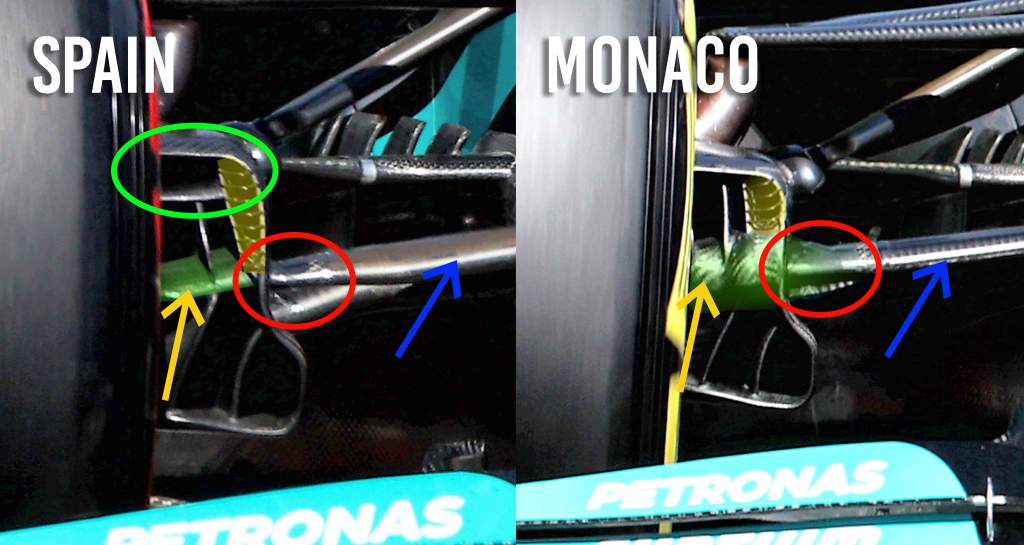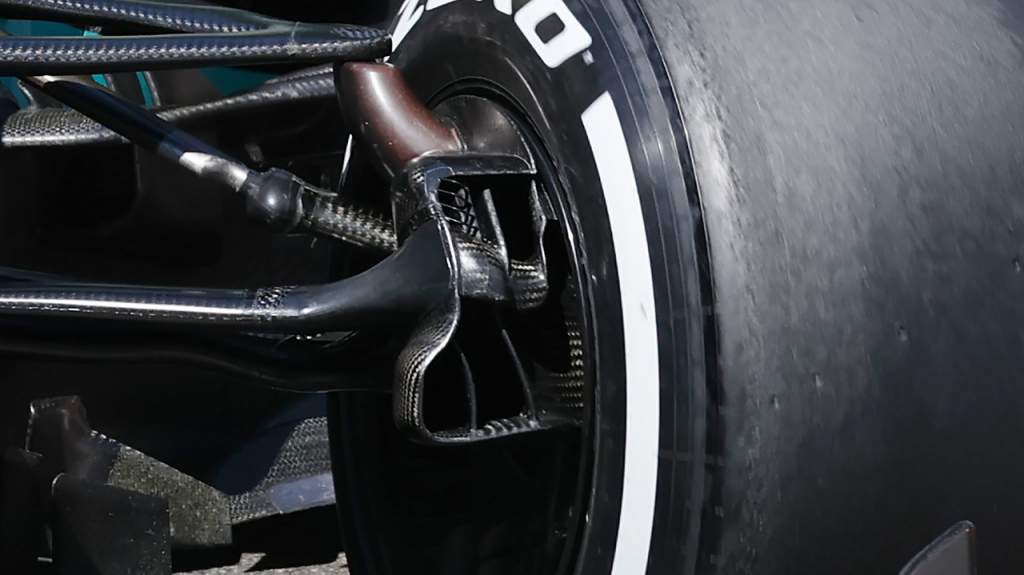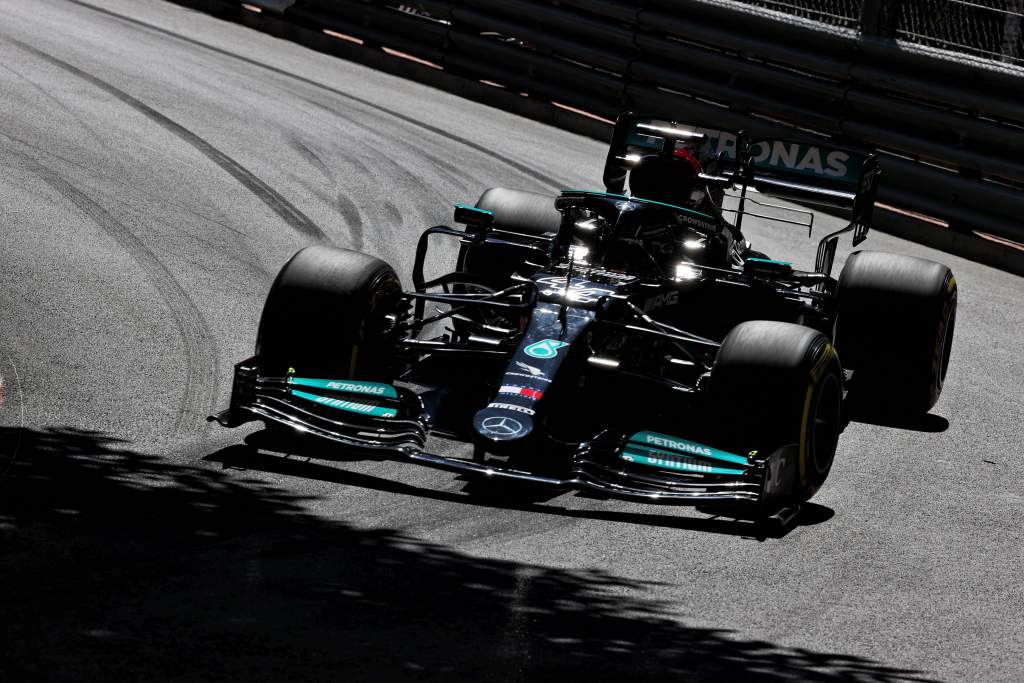Up Next

Relative to other tracks, it’s not unusual for teams to modify their brake ducts and front suspension at Monaco, for a little extra steering lock to get around the Loews hairpin and allow for a little extra suspension movement on the undulating roads.
Along with that, you might also look at your weakest suspension links and beef them up a little just to allow them to withstand that innocent clip of the barrier that is never more than centimetres away.
We can see that Mercedes has altered its front brake ducts to potentially achieve all of the above.

The top half modification on the brake duct (green circle) is probably to improve the cooling of the front calipers.
At Monaco, there are no major braking episodes but there are a lot of smaller braking requirements that mean the calipers can build up temperature. If that happens, it can lead to a long brake pedal, which is something that is not confidence-inspiring around Monaco.
Along with that, I believe the outer end of the front track rod (red circle) doesn’t slim down as quickly as the normal specification.
The trackrod carbon material (blue arrow) also looks different. It’s a more woven material than a unidirectional material and the increased section of that middle brake duct section (yellow arrow) is probably to clear this larger trackrod while giving more room for extra steering lock and suspension movement.

Relative to woven carbon, unidirectional carbon is stiffer in compression so ideal for a trackrod under normal circumstances but not as tough when it comes to getting a load in excess of what it’s designed for. This will increase the weight slightly, but we are talking something like 150grammes so nothing too dramatic.
There may also be some steering geometry changes hidden within that brake duct. It’s not uncommon for teams to alter the Ackermann characteristics for Monaco.

Ackermann is the relationship of the inside and outside front wheels when steering lock is applied. Changes in this relationship can alter the available grip from the inside tyre in slow corners, but more importantly it can help with front tyre warm-up.
I hear you ask, “if it helps with front tyre warm-up, why not run it all the time?”. The reason is simple – you would just destroy the inside front tyre from sliding in corners like T3 and T4 in Barcelona.



